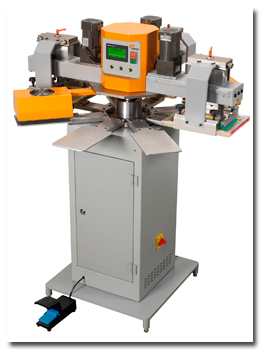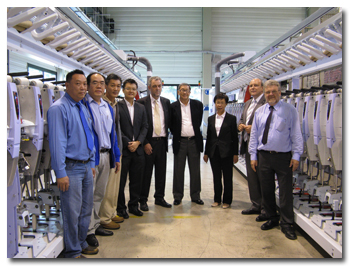Credit the absence of any meaningful cost pressure for most of today’s stronger bottom lines. Zero
in on textile and apparel companies’ two major production expenses — raw materials and labor — and
cost increases over the current year have been either minimal or nonexistent. On the raw-material
front, for instance, cotton fiber prices, while above year-ago levels, are nowhere near the
sky-high $2-plus-per-pound peaks of just two years ago. And all indications would seem to indicate
that these quotes won’t be under any significant upward pressure for the remainder of the year —
and probably well into 2014. Thus, the U.S. Department of Agriculture’s latest global production
estimate for the 2013-14 global cotton crop shows totals continuing to run well above projected
consumption levels. Result: Another increase in year-ending inventories, with the marketing year’s
ending stock-usage ratio — a major cotton price determinant — expected to climb to near 86 percent.
That’s more than double the low 39-percent reading of just a few years ago.
Prices also seem a bit soft when it comes to wool, the other key natural fiber. Indeed,
quotes here are actually running under late-2012 levels. Zero in on man-made fibers, and again,
things remain pretty much under control. Uncle Sam’s producer price index for these fibers, for
example, remains fairly close to levels prevailing 12 months ago. And this reassuring man-made
fiber picture is confirmed by another price index, this one compiled by PCI Fibres, an
international consulting firm. This latter yardstick — a weighted average for acrylic, nylon,
polyester and polypropylene filament yarns and staple fiber — also indicates little near-term price
change both here in the United States and overseas.
No Labor Pressure Either
All signs point to an equally positive labor-cost scenario. To be sure, wage levels in mills
making both basic and more highly fabricated products at last report were running 2- to 2.5-percent
above year-ago levels. But the impact of this is being erased by continuing advances in worker
productivity – estimated to be rising by as much as a 3-percent annual rate. As such, costs per
unit of mill output won’t be advancing over the current year. Indeed, these unit labor costs could
well edge fractionally lower. And a similar pattern is seen in the apparel sector, where new
efficiency gains are also more than offsetting only fractional pay hikes. Moreover, this lack of
any meaningful upward wage pressure is likely to persist for some time. And it will be not only
because of continuing strong gains in productivity. More important here is the fact that today’s
still relatively high unemployment rate isn’t going to disappear anytime soon — a fact that pretty
much rules out any excessive new pay demands. If there’s any doubt about this, consider the
following: The U.S. economy is currently projected to continue adding some 200,000 new jobs a month
— or 2.4 million per year. While clearly a good sign, that still means it should take about five
years to bring down the jobless rate to levels prevailing just before the recent recession. Given
this scenario, it’s clear that textile, apparel and other production workers’ jobs will not succeed
in allowing for anything more than currently small pay hikes for at least another few years.
A Cost-Price Perspective
The improving overall cost picture can be best appreciated by comparing production expenses
to the industry’s sales dollar. True, the percentage of each dollar attributable to labor has not
changed, and is not expected to change, by all that much — remaining, as it has, in the 18- to
19-percent and 43- to 44-percent ranges for mills and apparel manufacturers, respectively. On the
other hand, with fiber costs way down vis-à-vis a few years ago, the raw material portion of a
mill’s sales dollar has tumbled — from 71 percent in 2011 to just 53 percent this year. And a
similarly sharp percentage drop is seen for apparel makers. More importantly, include labor costs
as well as raw materials, and the resulting decline in the overall apparel cost-sales ratio is
particularly noteworthy. In 2011, for example, these combined outlays by apparel manufacturers
actually topped the industry’s revenues, thereby precipitating an apparel industry slide into the
red. But 2011 should be considered an anomaly, with current 2013 cost-sales ratios — both for
textile mills, 72 percent, and apparel firms, 88 percent — representing more typical readings. In
any case, all signs suggest that today’s more normal ratios will continue for all sectors of the
U.S. industry, thus assuring modestly good profit outlooks for at least the next few years.
August 2013







